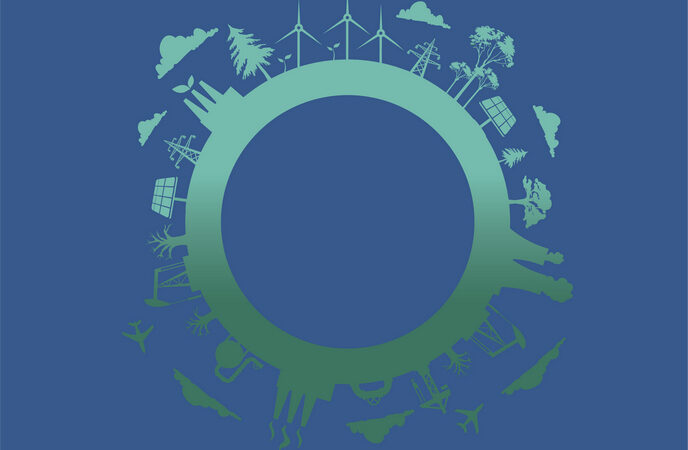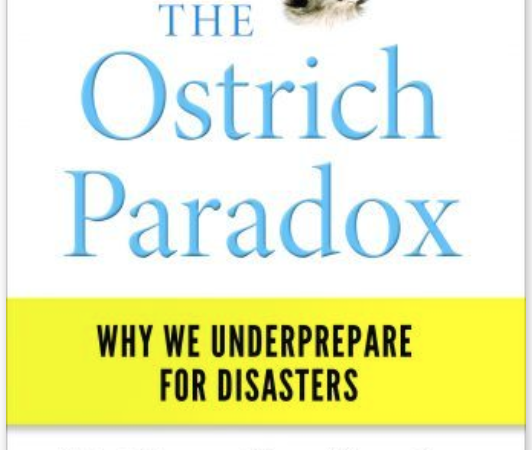Credit: Unsplash/CC0 Public Domain
by Strategic Management Society
Despite the increasing frequency and severity of floods, storms, wildfires and other natural hazards, some firms in disaster-prone areas prepare while others do not.
That issue was examined in a new study by Jennifer Oetzel, professor, American University and Chang Hoon Oh, William & Judy Docking Professor of Strategy, University of Kansas published in the Strategic Management Journal (SMJ).
“Due to the increased frequency and severity of floods, storms, epidemics, wildfires and other natural hazards anticipated over the coming decades (according to the National Oceanic and Atmospheric Administration), there is growing pressure on managers and their firms to develop strategies for managing natural disaster risk,” write the researchers.
“Preparing for future events that may never occur is challenging. Day-to-day events tend to crowd out long-term planning, but business continuity depends on managers anticipating and planning for large scale disasters. For these reasons, our goal in this study was to understand the antecedents associated with disaster preparation so that managers can better prepare for natural disasters.”
They defined disaster preparedness as the acquisition of the skills and capabilities needed to reduce damage to a firm, to minimize disruption to the supply chain, and business activity more generally, and to save lives and protect employees.
Disaster preparedness can entail a wide variety of initiatives including conducting an assessment of firm vulnerability to natural disasters, establishing a natural disaster response plan, training employees about natural disaster preparedness, purchasing insurance, developing a business continuity plan, and arranging to move business operations temporarily to another location, among others.
Emergency preparedness pays off. A review conducted by the Wharton Risk Center that focused on floods suggested that for every dollar spent on flood risk reduction, on average, five dollars is saved through avoided and reduced losses. But despite the documented value of preparing, most firms fail to do so.
“Since not all firms located in disaster prone areas prepare for disasters, what are the antecedents to disaster preparation? To answer this question,” write the authors, “we looked at several factors that are likely to affect whether or not businesses will prepare. The first factor is organizational experience with disaster, which can be a transformational and powerful motivator for change when managers see the value of disaster preparation and planning.”
The mechanisms driving the relationship between experience and preparedness are multifaceted. Managers may fail to learn from past experiences if they do not consider a recently experienced disaster as representative of future events. Even when managers learn from experience and see preparation as valuable, they may lack the organizational influence and find that they are unable to leverage learning to inform decision-making.
Aside from experience, strategic decisions around disaster preparation are likely to be affected by managers’ subjective judgments and/or knowledge about disaster risks. Depending upon the nature of their experience, managers may either over- or under-estimate disaster risk and thus over or under prepare.
Research has also shown that willingness to learn from other organizations about how to manage natural disaster risk is also important. External sources of information provide different perspectives and may help organizations to avoid internal biases in decision making.
“Another set of factors that are presumed to affect preparation are the characteristics of disasters, including their type, frequency, and impact,” write the researchers. “Historical records and scientific data indicate whether or not a given location is subject to natural disasters and, if so, of what type.
“Natural scientists examining climate change trends are raising concerns, however, that past experiences may not be predictive of the future. In certain geographic areas (e.g., Houston, Texas), the frequency of major disasters may be increasing substantially, deviating significantly from the past.”
In conducting two studies—an international survey in 18 disaster-prone countries and a U.S. survey in New York City and Miami—Oetzel and Oh found that managers are more likely to prepare when their companies experienced prior disasters. The likelihood of preparedness is even higher when companies work with and learn from other organizations and stakeholders.
“Managers operating in locations characterized by high impact, low frequency disasters are more willing to learn from others,” they wrote. “In contrast, managers in areas characterized by low impact, high frequency disasters, are more likely to prepare alone. Since effective disaster preparation typically entails working with, and learning from others, those companies that choose a go-it-alone strategy may misjudge disaster risk.”
The SMJ is published by the Strategic Management Society (SMS), comprised of 3,000 academics, business practitioners, and consultants from 80 countries, focuses on the development and dissemination of insights on the strategic management process, as well as on fostering contacts and interchanges around the world.




